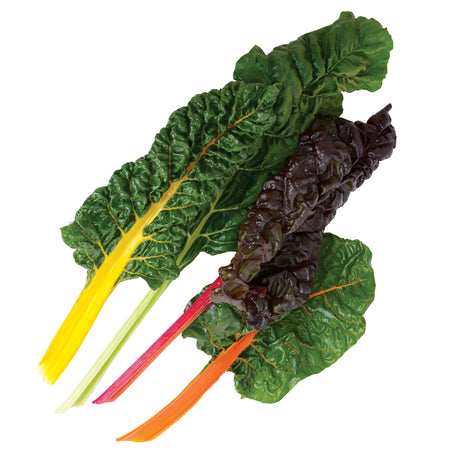BRIGHT LIGHTS
Product Description:
| Soil Temp for Germ | 50–75°F |
| Seed Depth | ½" |
| Seed Spacing | 2–3" |
| Days to Emergence | 5–17 |
| Thin Plants to | 10–16" |
| Row Spacing | 18–24" |
| Fertilizer Needs | Medium |
| Minimum Germination | 75% |
| Seeds per Gram | ≈ 50 |
| Seed Life | 2 years |
Beta vulgaris, Cicla Group Swiss chard is a vegetable that is in the same family as the common beet, however while the root of the beet is commonly eaten, it's the leaves of the Swiss chard that are consumed. Recent nutritional analysis has shown that Swiss chard is second only to spinach on the world's healthiest vegetable list. Packed with anthocyanins and fiber it's one of the most antioxidant rich foods as demonstrated in the vivid colors of the leaves.
Days to maturity are calculated from date of direct seeding.
Culture
• Swiss chard grows best in cool weather and overwinters in mild climates
• Apply 1 cup of TSC's Complete fertilizer per 5 row feet, and 1 inch of compost
• Cover beds with row cover if temperatures are cool
Direct Sowing
• Sow mid-spring through summer
• Thin when plants reach a height of 3 inches
Transplanting
• Start indoors 3-4 weeks before anticipated transplant date
• Start June-July for transplanting July-August for a fall/winter crop
Insects & Diseases
• Common insects: Aphids, leaf miners, flea beetles, and leaf hoppers
• Insect control: Pick off affected leaves and check for eggs — spray with Pyrethrin, use silver mulch
• Common diseases: Leaf spot
• Disease prevention: 3-4 year crop rotation, remove debris
Harvest & Storage
• Harvest leaves from the outside, taking care not to damage the growing point
• Store at 36°F and 95% relative humidity
What is seed tape?
Seed tapes are perfectly straight rows of precisely spaced crops. No more having to thin seedlings! This biodegradable tape will plant a row 5 meters (16 feet, 5 inches) long. Simply lay it in a furrow and cover with a light layer of sifted compost or soil, water and wait. Save yourself a heap of planting time with these popular vegetable and herb staples.


